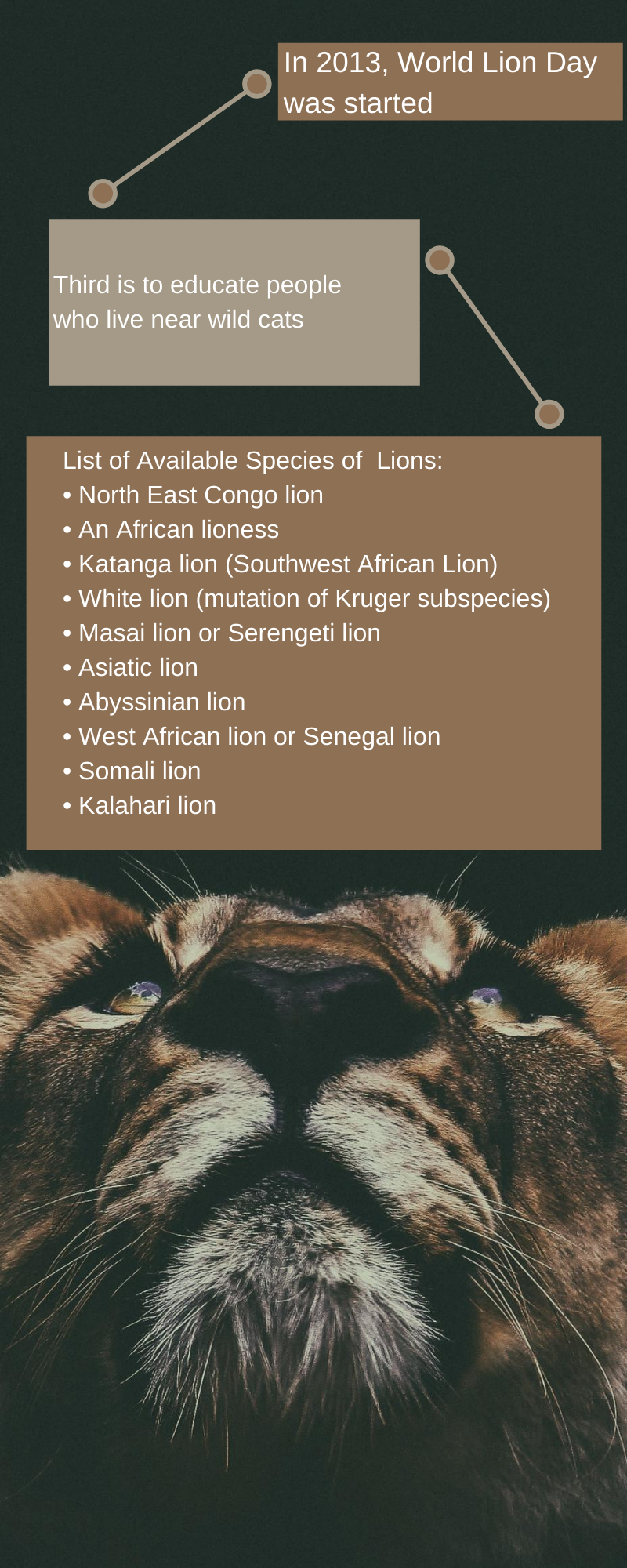Hyderabad: World Lion Day is also known as the National Geographic Big Cats Initiative. Currently, researchers estimate that there are between 30,000 and 100,000 lions left on planet Earth. Over the last four decades, the lion population declined by fifty percent.


- India recorded a 29% increase in the population of Asiatic lions living in Gujarat’s Gir forests, in the past five years, with their population going up from 523 in 2015 to 674 in 2020.
- The period also saw a 36% increase in the distribution area of the lions from 22,000 sq km in 2015 to 30,000 sq km in 2020.
- Currently, Asiatic lions are found in the protected areas and agro-pastoral landscape of Saurashtra, covering nine districts in Gujarat
Also Read: July 29 celebrated as Global Tiger Day, often called International Tiger Day
- Lions have vanished from over 80 percent of their historic range in just the last 100 years.
- Lions exist in 27 African countries and one Asian country, but only 7 countries are known to each contain more than 1,000 lions. Lions are extinct in 26 African countries.
- As humans develop wild habitats, lions and humans come in increasingly closer contact. Livestock begins to replace the lion’s natural prey, fueling human-lion conflict in which lions are killed in retaliation or because of their perceived threat to human livelihood.
- Rampant bushmeat, poaching depletes, prey populations poses a threat to lions themselves; they are often caught and killed in wire snares and traps set for their prey.
- Dramatic habitat loss and fragmentation due to human development confines lions to isolated islands of land, increasing their risk of extinction.
- Poorly managed trophy hunting and the illegal hunting of lions for body parts used in local and international (primarily Asian) traditional medicine are both contributing to lion population declines.
- Lions are currently listed as “Vulnerable” on the International Union for the Conservation of Nature (IUCN) Red List of Threatened Species.
Conservation efforts:
- Since 1975, the lion has been included in CITES Appendix II, and the Endangered Asiatic Lion, i.e. subspecies P. leo persica, in CITES Appendix I.
- In Africa, lions are present in a number of large and well-managed protected areas. Most range states in East and Southern Africa have an infrastructure that supports wildlife tourism, and in this way, lions generate significant cash revenue for park management and local communities and provide a strong incentive for wildland conservation.
- Regional conservation strategies have been developed for lions in West and Central Africa and Eastern and Southern Africa. By setting out common priorities to guide action on both national, community, and landscape levels, the regional conservation strategies have the potential for broad and significant improvement of lion status and management. These regional strategies have been used in many countries to develop Lion Conservation Action Plans.
Also Read: At 18, Deveshi Trehan, becomes a tech-fashion entrepreneur for a noble cause



